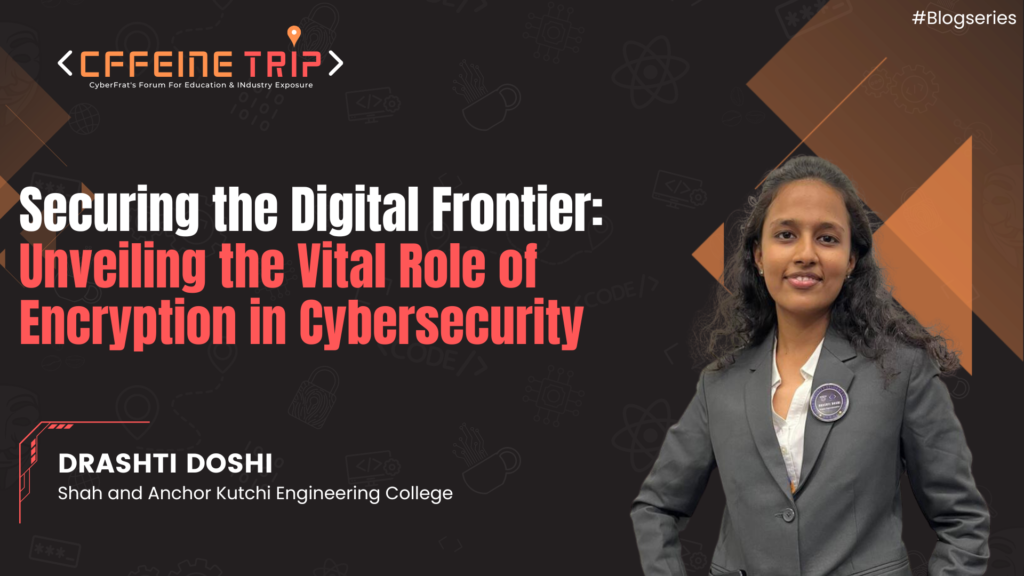
Introduction
Encryption plays a vital role in cybersecurity by ensuring the confidentiality, integrity, and authenticity of data. It is a technique used to convert plaintext into ciphertext, making it unreadable to unauthorized individuals.
Here are some key roles of encryption in cybersecurity:
1. Confidentiality: By encrypting data, it becomes unintelligible to unauthorized users, preventing them from accessing the information even if they gain unauthorized access to the data.
2. Data Protection: It safeguards sensitive information from unauthorized disclosure or interception by encrypting it before storage or transmission, making it useless to anyone who doesn’t have the decryption key.
3. Secure Communication: By encrypting data during transmission, it prevents eavesdropping and interception by unauthorized entities. This is particularly important when transmitting sensitive information over the internet or other networks.
4. Integrity: In the security environment, integrity refers to information systems and their data being accurate. Encryption ensures data integrity using hash algorithms and message digests.
5. Authentication: Encryption can be used for user authentication and verification. For example, passwords are often stored in hashed and encrypted forms in databases. When a user attempts to log in, their entered password is hashed and compared to the stored encrypted version. If they match, the user is authenticated.
6. Compliance and Regulations: Encryption is often a requirement for compliance with various industry regulations and data protection laws. For example, the Payment Card Industry Data Security Standard (PCI DSS) requires the encryption of cardholder data during transmission and storage.
7. Defence Against Data Breaches: In the unfortunate event of a data breach, encrypted data is significantly more challenging for attackers to exploit. Even if they manage to gain access to the encrypted data, without the decryption key, the information remains unreadable and unusable.
It’s important to note that while encryption provides significant protection, it is just one piece of the overall cybersecurity puzzle. Proper key management, secure protocols, access controls, and other security measures are also essential for a comprehensive cybersecurity strategy.
Types of encryption algorithms
1. Advanced Encryption Standard (AES): A symmetric block cipher used to protect classified information and is implemented in software and hardware throughout the world to encrypt sensitive data.
2. Data Encryption Standard (DES): A symmetric-key algorithm used to encrypt data. DES’s short key length of 56 bits was criticized from the beginning, due to its vulnerability to brute force attacks.
3. Triple DES (3DES): An improvement on the original DES algorithm. In essence, 3DES performs the DES algorithm three consecutive times during encryption and decryption, making it far more robust against brute force attacks albeit slower.
4. Diffie-Hellman key exchange: It is also known as exponential key exchange, a method of securely exchanging cryptographic keys over a public channel by using numbers to a specific power to produce decryption keys.
5. Elliptical curve cryptography (ECC): An approach to public-key cryptography based on the algebraic structure of elliptic curves over finite fields. The resulting cryptographic algorithms are faster and more efficient while producing a comparable level of security with shorter keys. This makes ECC a good choice for devices with limited computing resources.
6. Quantum key distribution (QKD): A proposed method for encryption where encryption keys are generated using a pair of entangled photons that are then transmitted separately to the message.
7. Rivest- Shamir- Adleman (RSA): One of the first public-key cryptosystems that is widely used for secure data transmission. Many protocols like Secure Shell (SSH), Pretty-Good Privacy (PGP), Secure Sockets Layer (SSL), and Transport Layer Security (TLS) rely on RSA and digital signatures.
How does encryption keep the internet secure?
Most legitimate websites use the encryption protection called “Secure Sockets Layer” (SSL), which is a form of encrypting data that is sent to and comes from a website. This keeps attackers from accessing that data while it is in transit.
Want to make sure a site is using this technology? Look for the padlock icon in the URL bar, and the “s” in the “https://”.
If you see these signs, you’ll know that you are conducting secure, encrypted transactions online.
It’s a good idea to access sites using SSL when:
1. You store or send sensitive data online. If you use the internet to carry out tasks such as filing your taxes, making purchases, renewing your driver’s license, or conducting any other personal business, visiting sites using SSL is a good idea.
2. Your work requires it. Your workplace may have encryption protocols, or it may be subject to regulations that require encryption. In these cases, encryption is a must.
Which is the strongest encryption method?
There are several encryption methods that are considered effective. Advanced Encryption Standard, better known as AES, though, is a popular choice among those who want to protect their data and messages. This form of encryption has been the U.S. government standard since 2002. AES is used worldwide.
Limitations
While encryption is a powerful tool for securing information, it is not without its limitations.
Here are some of the key limitations of encryption:
1. Key Management: Encryption relies on the use of cryptographic keys, which are used to encrypt and decrypt data. Key management can be complex, and if not done properly, it can undermine the security of the encrypted data.
2. Vulnerabilities in Implementation: Weak or flawed implementations of encryption algorithms can introduce vulnerabilities that can be exploited to gain unauthorized access to encrypted data. It is crucial to use well-tested and properly implemented encryption algorithms to minimize the risk of such vulnerabilities.
3. Encryption Overhead: Encryption and decryption processes require additional computational resources and time. This can be a challenge in resource-constrained environments or systems with high throughput requirements.
4. Insider Threats: Encryption primarily protects data from unauthorized external access, but it may not provide sufficient protection against insider threats. If an authorized user with access to the encryption keys decides to misuse or leak the keys, they can potentially bypass encryption and gain access to sensitive information.
5. Social Engineering: Encryption does not protect against social engineering attacks, where an attacker manipulates individuals to disclose sensitive information or bypass encryption measures. Attackers may target individuals with access to encrypted data and try to trick them into revealing encryption keys or other confidential information.
6. Legal and Regulatory Challenges: Encryption can pose challenges in legal and regulatory compliance, particularly in cases where authorities require access to encrypted data for law enforcement or national security purposes. Balancing privacy and security with lawful access can be a complex issue, leading to ongoing debates and discussions. Despite these limitations, encryption remains a critical tool in maintaining data security and privacy. It is important to understand these limitations and address them effectively to ensure the proper implementation and use of encryption in various contexts.
Conclusion
Today, it is increasingly common in civilian systems to protect data in transit and at rest. Outside of payments and e-commerce, organizations are increasingly relying on encryption to protect applications, trade secrets, and customer information.
The increasing cost of data breaches, averaging $3.92 million globally and $8.19 million in the United States, highlights the need to protect the confidentiality, integrity, and authenticity of sensitive data when other security measures fail. Not to mention regulatory and reputational damages
Encryption is also be used to protect data in transit to prevent man-in-the-middle attacks and eavesdropping. For example, data that is being transferred via the Internet, smartphones, Bluetooth, or ATMs. Beyond securing data and communications, encryption can be used for secure data destruction.
